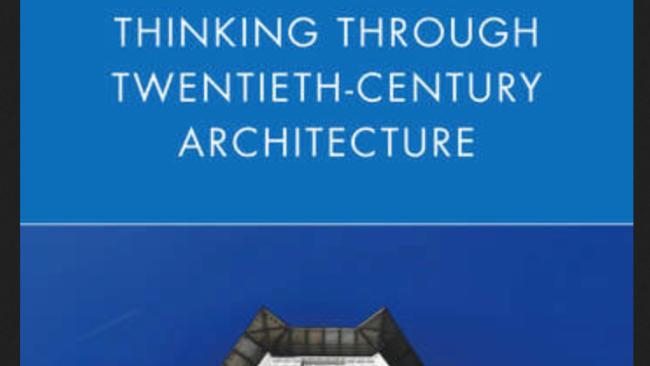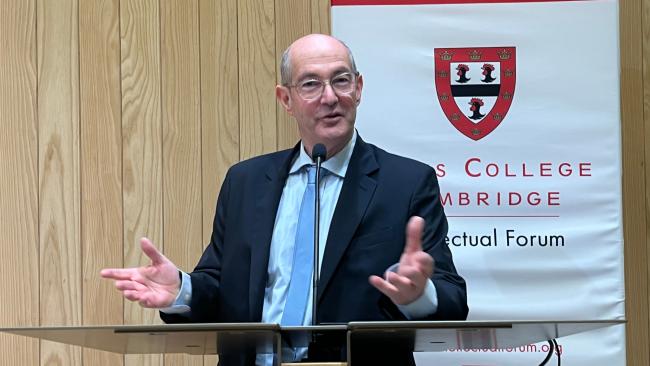
"We need to appreciate the best, and understand what led to the less than satisfactory"
Emeritus Fellow and architect Nicholas Ray has published a new book, Thinking Through Twentieth Century Architecture, which enters into the modernism debate with a fresh, neutral perspective, and hopes to encourage budding architects to be more thoughtful than they may otherwise have been.
Nick tells us more about his book and the concepts behind it.
What led you to write this book?
“In maintaining that philosophical reflection can assist in the improvement of the world we inhabit, this book participates in a continuing project to counter the prevailing tendency to separate theoretical discourse from its practical consequences."
As an Honorary Visiting Professor at the University of Liverpool, I was asked to give a set of two-hour undergraduate lectures on the origins of 20th century architectural modernism and reactions to it, and to accompany them with seminars. In the latter, I drew on work I've done with German colleagues who are interested in the intersection of philosophy and architecture. The historical lectures had to be very selective, because it is a huge subject, and so did the seminars, because students had no background in philosophical terminology or thinking. When lockdown arrived, I was asked to package everything into twenty-minute chunks for Microsoft Teams delivery and I realised students wouldn’t understand the continuity of what I was trying to get across. So I decided to write an essay for each lecture or seminar hour. Then I realised with a bit of tweaking I had a book.
That’s the pragmatic reason, but there’s a broader ambition. To quote from the book's final paragraph: “In maintaining that philosophical reflection can assist in the improvement of the world we inhabit, this book participates in a continuing project to counter the prevailing tendency to separate theoretical discourse from its practical consequences."
How would you summarise the book?
The book proposal is unusual in combining history with theory. Publishers were used to historical accounts, and to books on 20th century theory, but hadn’t come across any that merged the two. The book establishes very broad philosophical distinctions and then proceeds historically, using the terminology already introduced, to examine selected buildings of the 20th century, their architects and in some cases their writings.
Why did you decide to consider philosophy alongside architecture?
My thesis is that just as historians of architecture reveal a position (which is at root philosophical) when they write, so architects hold views about their practice which are fundamentally philosophical. My 2005 book Architecture and its Ethical Dilemmas examined some of the judgments architects are required to make in practice. For instance: should they privilege the requirements of their clients above their duty to the environment? Even just trying to balance aesthetic values with ethical ones, a metaphysical position becomes evident.
Why did you find it important to maintain a neutral position in the modernism debate?
"I’ve always seen it as important to try and explain deficiencies as well as strengths of architects’ work. The same goes for philosophy. It is not up to me to persuade students to make buildings my way, or convince them my own theoretical position is ‘correct'."
As a teacher, I’ve found different students are temperamentally inclined towards different positions. I’ve always seen it as important to try and explain deficiencies as well as strengths of architects’ work. The same goes for philosophy. It is not up to me to persuade students to make buildings my way, or convince them my own theoretical position is ‘correct'. There is another way of teaching, which is to claim that your way (of designing, or thinking) is the only proper one and that can be a very powerful experience for many students. But, temperamentally, that is not my way. Of course, in acknowledging that, I’m advocating a form of scepticism about there being a single ‘right’ way – and that is a philosophical position in itself.
Who do you hope will read this book?
I hope architecture undergraduates will read it as a starting point for when they encounter the built legacy they'll inherit, and will have to make sense of, if they choose to proceed to practice. The book has an extensive bibliography to guide readers into more detailed study of those areas that particularly interest them. But I also think non-architects will enjoy it, which is partly why it has 200 illustrations, from city plan scale down to the nuts and bolts of particular details. I’ve found that people are surprised to find that, behind the decisions that lead to the buildings and cities we inhabit, there are not only powerful social and economic forces at work, but more general (and sometimes profound) ideas.
How would you like this book to influence its readers?
I hope it will encourage those who become architects to be more thoughtful architects than they might have been. And with luck non-architects will be better informed about the characteristics of 20th century design than people in the 20th century were about the 19th century inheritance. We need to appreciate the best, and understand what led to the less than satisfactory. The wholesale demolition that accompanied making a new world should not continue, purely on grounds of embodied energy, and this makes understanding the strengths and weaknesses of 20th century architecture very important.





